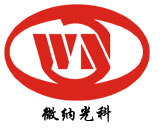
Instrument construction
1. Instrument structure:
Modular structure is composed of electronic balance, computer, printer, high frequency induction combustion host, tubular resistance furnace host, vacuum cleaner and other modules.
2. Infrared detection system:
1) The standard carbon and sulfur analyzer is equipped with three independent infrared absorption cells (i.e. three physical channels: two carbon channels and one sulfur channel); CS3000G series instruments can also be equipped with four independent infrared absorption cells (i.e. four physical channels: two carbon channels and two sulfur channels) according to user requirements.
2) Detector: Imported pyroelectric solid-state infrared detector is adopted;
3) Motor: Adopt imported synchronous motor;
4) Light source: Adopt imported anti-oxidation and stable infrared light source;
5) Constant temperature: Constant temperature control is carried out in the whole air chamber to ensure constant temperature of analysis air and ensure measurement accuracy;
6) Protective gas: The infrared light source and detector are protected by oxygen to purify and isolate the influence of the surrounding atmosphere and improve the analysis stability and measurement accuracy;
3. Flow control: high-precision electronic flow control technology is adopted for analyzing air flow, with Anti-Overshoot System;;
4. Copper oxide furnace catalysis:
1) Before the analysis gas enters the C detection tank, CO in the analysis gas is converted into CO2 through catalysis by a copper oxide furnace, so as to ensure that CO and CO2 generated in the combustion process of the sample can be completely detected;
2) Transforming the analyzed SO2 into SO3 and then absorbing it to ensure pollution-free emission;
5. Dust filtration:
1) Adopt imported metal dust filter;
2) Automatically clean the combustion chamber and dust filter twice for each analysis, and automatically suck dust to prevent the adsorption effect of dust on the analysis process.
6. Instrument self-test function
1) Automatic monitoring and alarming of inlet total oxygen pressure, post-furnace analysis pressure and dynamic pressure;
2) Automatic monitoring and alarm of the high-frequency furnace switch furnace;
3) The high-frequency furnace cleaning device resets and automatically monitors and alarms;
4) The software provides step-by-step self-inspection function (monitoring and adjusting infrared signals, and checking the actions of various valves in the gas circuit);
5) The instrument can realize leak detection by sections through software.
7. Weighing: The computer is connected with the electronic balance to realize accurate weighing, and the sample quality is automatically transmitted to the analysis software. If necessary, the sample quality can also be entered manually.
7. Burning furnace
High frequency induction furnace: 18MHz;; Max 2.7 KVA
Tubular resistance: the temperature can reach 1550 ℃; Max 4.4 kW
The resistance furnace adopts silicon carbide heating element, which can prolong the service life of the element by controlling the heating power and automatically control the temperature of the furnace body and shell, and it takes about 20 minutes to reach the operating temperature
8. Crucible pretreatment
Ceramic crucible of high frequency induction furnace can be pretreated in tubular resistance furnace, and two functions of one instrument can be realized, which can improve working efficiency and analysis reliability.
|

